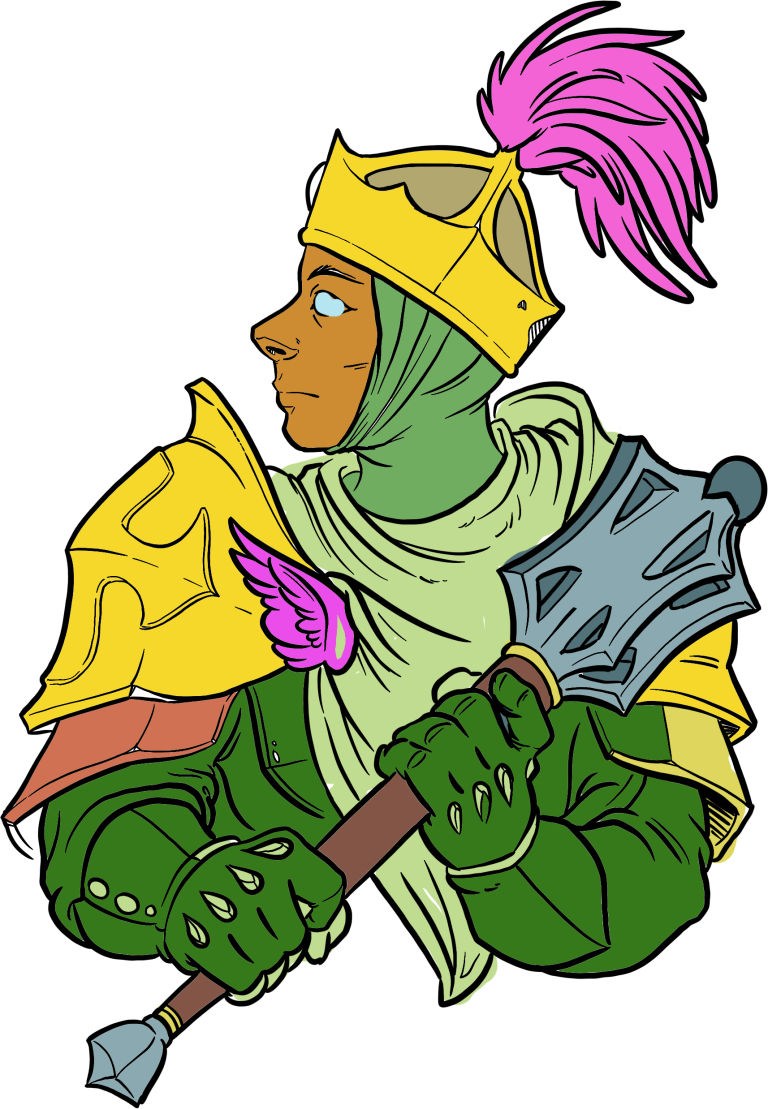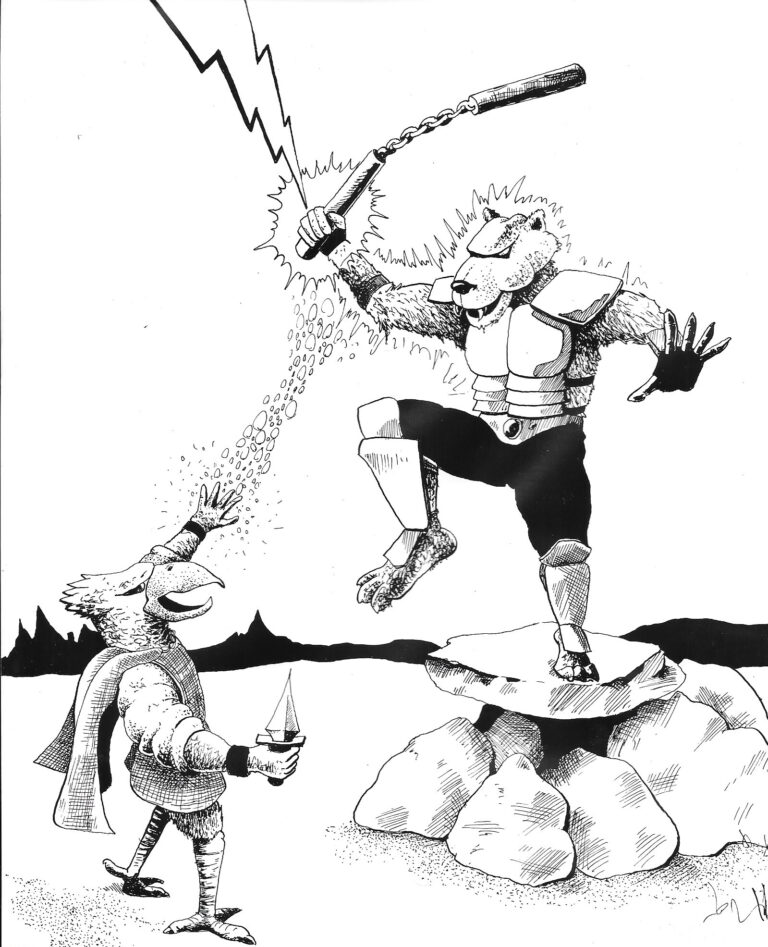Common TTRPG Terms With No Agreement On What They Mean
Quote from Shadomain Staff on October 23, 2023, 1:19 amBy Shadomain Staff
Pacing
Based on the general definiton of the term:
the act or result of setting the rate of movement or progress, as of a story, movie, lesson, etc.This could mean the time that a game session or campaign takes, or speed of the progress of the story.
Thanks to Robin Laws’ book Hamlet’s Hitpoints, I think most people now think of pacing in TTRPGs as being the GM managing the up and down points of the game. That could apply to a single session or the campaign as a whole. This is an important thing for GMs to work on. Too many “up” points (exciting but stressful moments) can mentally wear out players. Too many “low” points could lead to boredom with the players.
I’ve written before about pacing as in timing game sessions. If your game session needs to end within a given time limit, it’s important to learn how to manage the game so that it reaches a satisfying conclusion by the agreed on end time.Old School
This one should be obvious, it refers to the way games were played at a previous time. That could be the 70s, 80s, or 90s, depending on your age. But if we’re talking about an “old school” style ttrpg, what does that refer to? This one I’m not sure we can apply any one definition to. For a lot of people, old school implies a more deadly game, where PCs have less hitpoints, or die at 0 hp, or have less powers. But if we’re talking about D&D, it could mean PCs only choosing from a few species. Others think of old school as less rules, or the story being more free form. For a term that seems obvious, I would suggest any discussion about this term should begin with the participants agreeing on the definition first.
Sandbox
This one uses the basic idea that the players don’t have to follow a preset adventure path, and have meaningful choices about the stories their characters play. But it’s a little more difficult to define the boundaries of the term. At its extreme, a GM would build a campaign world, decide where the PCs start and ask the players “What do you want to do?”. But you could instead set up a town with a few things going on, such as an evil gang that’s come into town to bully and steal, and an ancient wizard’s abandoned tower outside of town, and rumors of a hideous monster living in the nearby swamps. You haven’t told the players what to do, but they’re likely to pick from the few ideas you’ve presented. Is this a sandbox campaign? You might get different answers from different people.
Railroad
“Railroading” is usually defined as when a GM doesn’t leave the players meaningful choices. The idea is that the train can’t decide where it wants to go, it can only go where the tracks allow it to go. But what if you present the players with a town, and tell them that a hideous creature has been killing innocents. You haven’t presented them with any other ideas, but they still have the choice to deal with this creature or not. The PCs could still turn around and leave, exploring someplace else, or forming a thieve’s gang, or anything else. Is this railroading? As with the previous term, you might get different answers from different people.
Homebrew
This term has an agreed on definition: things you’ve made up for your game or adjustments to the published rules for your game. But it’s not obvious what people mean if they ask “Do you use any homebrew?”
That’s because homebrew could mean rules you’ve created, or monsters or magic items you’ve created, or just that the game takes place in a world of your own creation. All of these things are certainly homebrew, but different GMs will use any or none of these. For instance I’ve run a 5e campaign that uses most of the rules as written, and nearly no adjusted rules, but it takes place in a world entirely of my own creation. Is that homebrew? Yes and no, right?Let us know what you think in the comments below.
By Shadomain Staff
Pacing
Based on the general definiton of the term:
the act or result of setting the rate of movement or progress, as of a story, movie, lesson, etc.
This could mean the time that a game session or campaign takes, or speed of the progress of the story.
Thanks to Robin Laws’ book Hamlet’s Hitpoints, I think most people now think of pacing in TTRPGs as being the GM managing the up and down points of the game. That could apply to a single session or the campaign as a whole. This is an important thing for GMs to work on. Too many “up” points (exciting but stressful moments) can mentally wear out players. Too many “low” points could lead to boredom with the players.
I’ve written before about pacing as in timing game sessions. If your game session needs to end within a given time limit, it’s important to learn how to manage the game so that it reaches a satisfying conclusion by the agreed on end time.
Old School
This one should be obvious, it refers to the way games were played at a previous time. That could be the 70s, 80s, or 90s, depending on your age. But if we’re talking about an “old school” style ttrpg, what does that refer to? This one I’m not sure we can apply any one definition to. For a lot of people, old school implies a more deadly game, where PCs have less hitpoints, or die at 0 hp, or have less powers. But if we’re talking about D&D, it could mean PCs only choosing from a few species. Others think of old school as less rules, or the story being more free form. For a term that seems obvious, I would suggest any discussion about this term should begin with the participants agreeing on the definition first.
Sandbox
This one uses the basic idea that the players don’t have to follow a preset adventure path, and have meaningful choices about the stories their characters play. But it’s a little more difficult to define the boundaries of the term. At its extreme, a GM would build a campaign world, decide where the PCs start and ask the players “What do you want to do?”. But you could instead set up a town with a few things going on, such as an evil gang that’s come into town to bully and steal, and an ancient wizard’s abandoned tower outside of town, and rumors of a hideous monster living in the nearby swamps. You haven’t told the players what to do, but they’re likely to pick from the few ideas you’ve presented. Is this a sandbox campaign? You might get different answers from different people.
Railroad
“Railroading” is usually defined as when a GM doesn’t leave the players meaningful choices. The idea is that the train can’t decide where it wants to go, it can only go where the tracks allow it to go. But what if you present the players with a town, and tell them that a hideous creature has been killing innocents. You haven’t presented them with any other ideas, but they still have the choice to deal with this creature or not. The PCs could still turn around and leave, exploring someplace else, or forming a thieve’s gang, or anything else. Is this railroading? As with the previous term, you might get different answers from different people.
Homebrew
This term has an agreed on definition: things you’ve made up for your game or adjustments to the published rules for your game. But it’s not obvious what people mean if they ask “Do you use any homebrew?”
That’s because homebrew could mean rules you’ve created, or monsters or magic items you’ve created, or just that the game takes place in a world of your own creation. All of these things are certainly homebrew, but different GMs will use any or none of these. For instance I’ve run a 5e campaign that uses most of the rules as written, and nearly no adjusted rules, but it takes place in a world entirely of my own creation. Is that homebrew? Yes and no, right?
Let us know what you think in the comments below.




